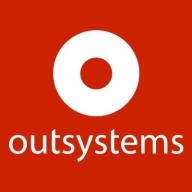

OutSystems and GitLab compete in the software development platforms category. OutSystems stands out for its low-code capabilities and rapid development features, while GitLab excels with its DevOps pipeline and continuous integration.
Features: OutSystems offers one-click publishing, visual modeling, and supports both web and mobile development with its drag-and-drop functionality. GitLab focuses on continuous integration, robust code review processes, and flexible CI/CD pipelines.
Room for Improvement: OutSystems users seek better performance and reporting tools, and find the costs high. GitLab users desire improved integration with AWS, enhanced security features, and a simpler setup process.
Ease of Deployment and Customer Service: OutSystems provides public, hybrid, and on-premises deployment but faces mixed reviews on support responsiveness. GitLab, while strong in public cloud deployment, lacks hybrid capabilities, but benefits from active community support.
Pricing and ROI: OutSystems has high yearly licensing fees, offering significant ROI in complex environments despite its steep pricing. GitLab presents a competitive pricing model with free and reasonably priced tiers, making it more accessible for smaller teams.
Migrating to GitLab is bringing time-saving benefits, and everything is easier to automate.
We have saved time significantly, reducing deployment time from four hours to five minutes per deployment.
Developing that same project in OutSystems can be completed in around 40 to 50% less time, requiring only six resources.
We have rarely needed to escalate issues to technical support since GitLab usually runs seamlessly.
I have interacted with architects for some advice during the implementation, and they were prompt in their response.
I have had meetings where they taught me, explained things, and provided guidance for starting from scratch.
Many helpful videos and documentation are available on the OutSystems site, making it relatively easy to learn the platform.
It has all the features required for our coding and deployment needs, which makes it scalable to our changing requirements.
We're transitioning to OpenShift for future scalability with increased user numbers.
For scaling, other deployment options from GitLab's side need to be adopted.
They can be deployed vertically and horizontally, supporting as many deployments as needed.
I have not encountered any performance or stability issues with GitLab so far.
The updates are frequent and demanding, happening at least once a week due to security reasons.
We raised a request with GitLab support, but they were unable to help because they could not find the root cause of what went wrong.
It would be beneficial to have a user-friendly interface for setting up these configurations, instead of just writing YAML files.
It is essential to conduct proper testing, such as unit tests and code coverage, within the SDLC pipelines.
GitLab can improve its user interface to make conflict resolution more user-friendly.
It is crucial to be aware of which module corresponds to which application in real-time projects, as there are multiple applications.
I would like to see more integration between the use of artificial intelligence to speed up the process delivery time.
What I would like to see is more servicing business analysts in the next release of OutSystems.
Even when working in other small organizations, we opted for GitLab as it was cost-efficient.
The pricing of GitLab is reasonable, aligning with what I consider to be average compared to competitors.
The price is high, and it limits user accessibility.
Subsequent users can be added at an additional cost per user; exact pricing details can be found on the OutSystems site.
As we implement automated testing and DevSecOps, it speeds up the process by forty to sixty percent.
The Ultimate version offers enhanced features for security scanning through DAST and SAST analysis, which have greatly benefitted our project workflow.
By integrating GitLab as a DevOps platform, we have enhanced agility, improved our time to market, and different teams can work collaboratively on various projects.
OutSystems offers a lot of reusable components and solutions that I can simply drag and drop and use, which has a significant impact on project delivery time.
OutSystems has a very good learning curve for developers.
I have recommended it in situations where very rigid enterprise structures are blocking them from being agile.
| Product | Market Share (%) |
|---|---|
| OutSystems | 6.5% |
| GitLab | 3.7% |
| Other | 89.8% |


| Company Size | Count |
|---|---|
| Small Business | 35 |
| Midsize Enterprise | 9 |
| Large Enterprise | 42 |
| Company Size | Count |
|---|---|
| Small Business | 18 |
| Midsize Enterprise | 7 |
| Large Enterprise | 29 |
GitLab offers a secure and user-friendly platform for CI/CD pipeline management, code repository control, and collaboration, enhancing development speed and efficiency. It facilitates automation with extensive customization and tool integration, ideal for DevOps processes.
GitLab supports source code management, version control, and collaborative development. It's frequently used in CI/CD processes to automate builds and deployments while integrating DevOps practices. GitLab allows companies to manage repositories, automate pipelines, conduct code reviews, and maintain development lifecycles. The platform supports infrastructure and configuration management, enabling efficient code collaboration, deployment automation, and comprehensive repository handling. Many organizations commit and deploy developed code using GitLab's capabilities.
What are GitLab's most valuable features?In specific industries, GitLab serves as a backbone for source code management and CI/CD implementation. Companies leverage its capabilities for infrastructure management and deployment automation, thus streamlining project delivery timelines. Its ability to handle configuration management and code repositories effectively aids in maintaining development lifecycles, making it a preferred choice for organizations committed to enhancing their DevOps practices.
OutSystems is a platform for low-code application development that unites design, code, and deployment to simplify development so any business can create innovative solutions in a timely manner. There are various use cases an organization can employ with OutSystems, including:
OutSystems offers faster development and deployment times than hand-coding while delivering unique and personalized solutions to its customers. The main focus of OutSystems is high-performance low code which enables businesses to create functional products that answer their needs. It offers clients the ability to develop enterprise-grade applications with a high level of security.
The product stands out from its competitors as it offers:
It ensures its clients that the applications built using this platform are as scalable as hand-coded ones while increasing workspace productivity and evolving applications’ capabilities.
OutSystems Features
OutSystems has various features through which users can develop and deploy highly efficient applications and other products. Some of the features include:
OutSystems Benefits
The solution offers a wide array of benefits to companies that utilize it in their application development. Some of these benefits include:
Reviews from Real Users
Harikrishnan R., a technical lead at Netlink Software Group America Inc, likes OutSystems because the tool helps with validation, offers good features, and is reliable.
An owner at a consultancy thinks OutSystems is versatile with great scalability and great technical support.
We monitor all Rapid Application Development Software reviews to prevent fraudulent reviews and keep review quality high. We do not post reviews by company employees or direct competitors. We validate each review for authenticity via cross-reference with LinkedIn, and personal follow-up with the reviewer when necessary.